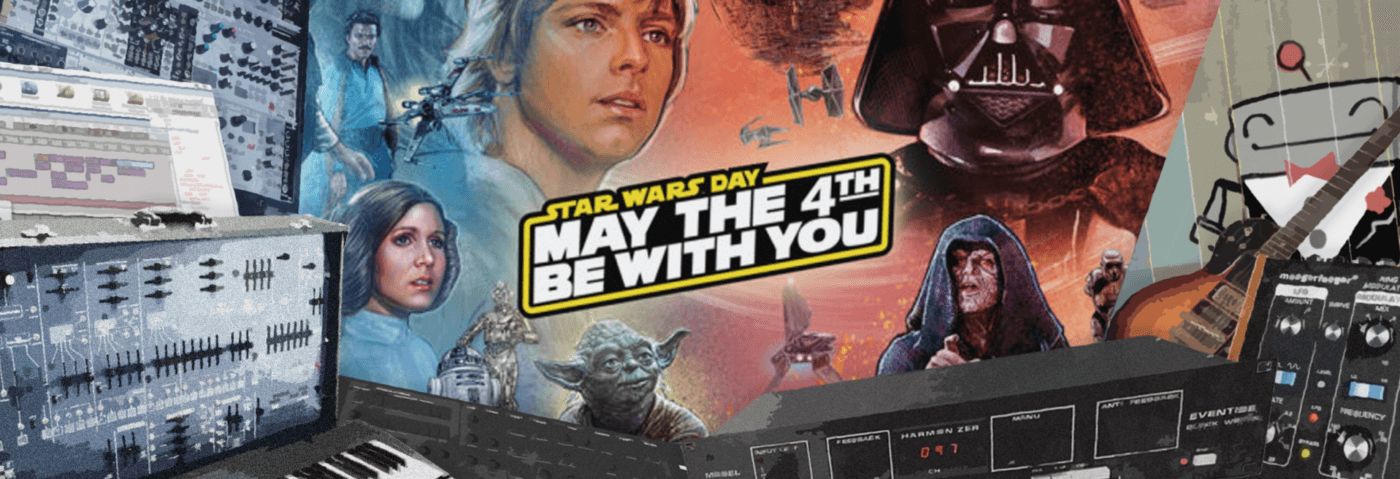For this May the Fourth, we put the spotlight on the synthesizers and other gear that played a part in the sounds of Star Wars.
Star Wars is a multi-generational science fiction phenomenon, encompassing film, TV series, books, comics, and more. No matter your age there’s likely a Star Wars that played an important part in your childhood. For us older types, seeing the original Star Wars (now called Episode IV: A New Hope) in the theatre was our first film memory. Millennials hold the prequels dear, while Gen Z and the newer generations will have grown up with the sequels and Stars Wars Stories films.
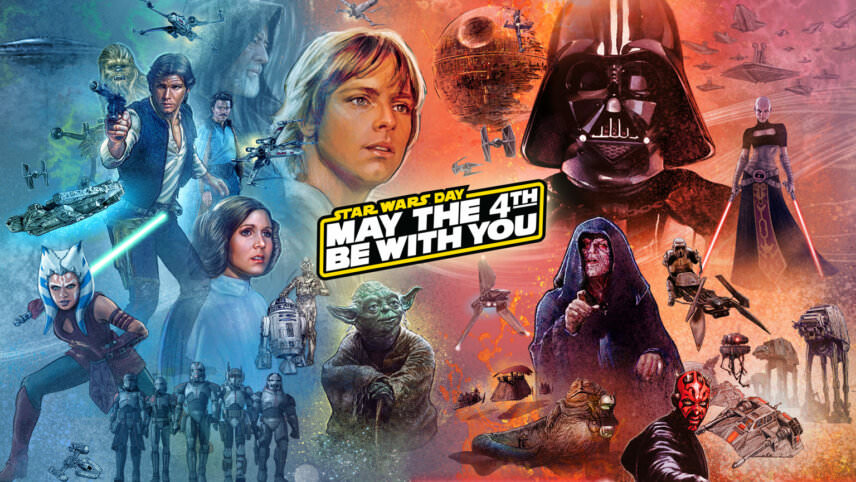
Throughout it all, though, has been the sound. From the very beginning, creator George Lucas and original sound designer Ben Burtt decided that Star Wars needed to have a lived-in feel. Sound was a big part of this. They relied heavily on found sound, recording factories, military equipment, and animals and then employing techniques borrowed from musique concrete to make them otherworldly.
This isn’t to say that they didn’t also employ synthesizers and other outboard equipment. While not used as often as in other sci-fi films of the time, they did occasionally reach for a synth or effects unit to get the sound they were after. The genius of Burtt and the other sound designers throughout the series is how well they were able to blend the sounds together into something wholly new.
Let’s go through the series, then, and see what synthesizers and hardware we can parse out of the sound mix.
Star Wars: A New Hope
It all began in 1977 with A New Hope. Along with Luke, Han and Leia, we were introduced to a droid named R2-D2 who famously spoke in beeps and bloops. These days, those words may conjure up an image of a newbie with a Eurorack system, but at the time it was cutting edge stuff. And, funnily enough, Ben Burtt ended up using equipment that’s not that far off from a modern Eurorack rig.
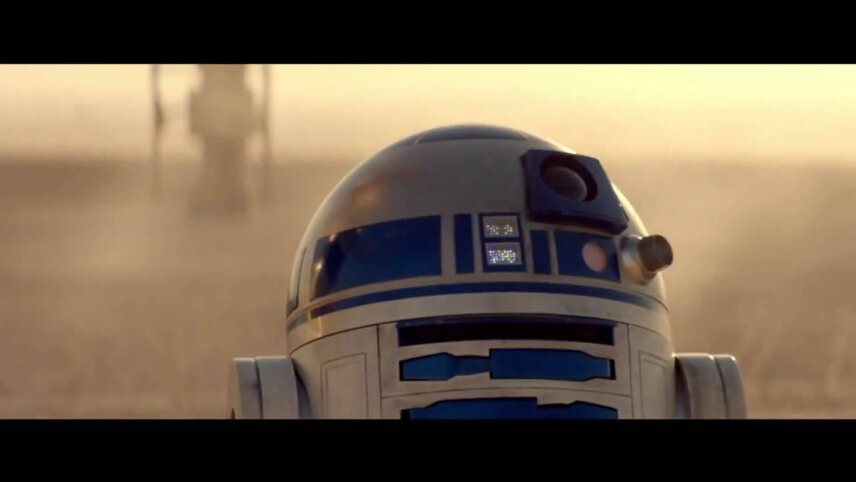
R2-D2 is more than just a rolling can. He’s a central character in the films and is clearly capable of emotion. To bring him alive, Burtt employed an ARP 2600, a classic synthesizer and the world’s first semi-modular one. By feeding a sample and hold LFO through the filter and setting it to self-resonate, he coaxed all manner of chirps and whistles from it. Something was missing, however.
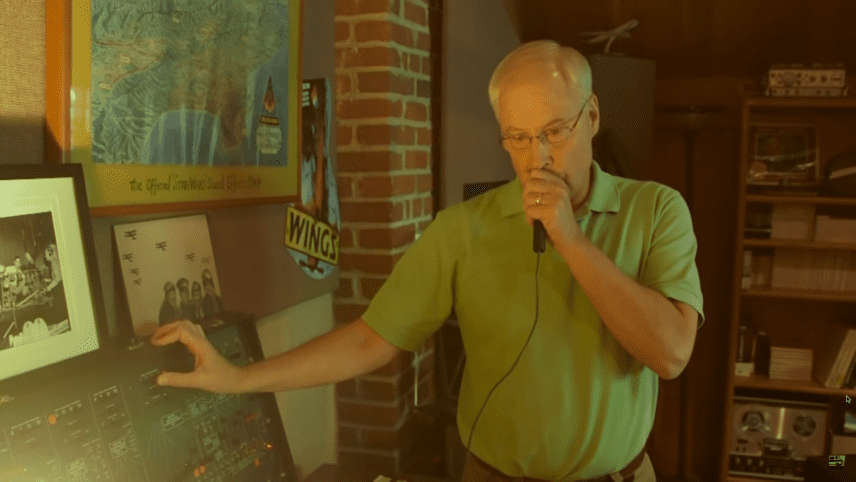
“The trick to it”, Burtt said in an interview with Roadtrip Nation, “was the human input”. For this, he plugged the microphone from an old tape recorder into the 2600 and pushed his own voice through the resonating filter. “You get the human input, which is the performance, and the electronic part, which is the machine”.
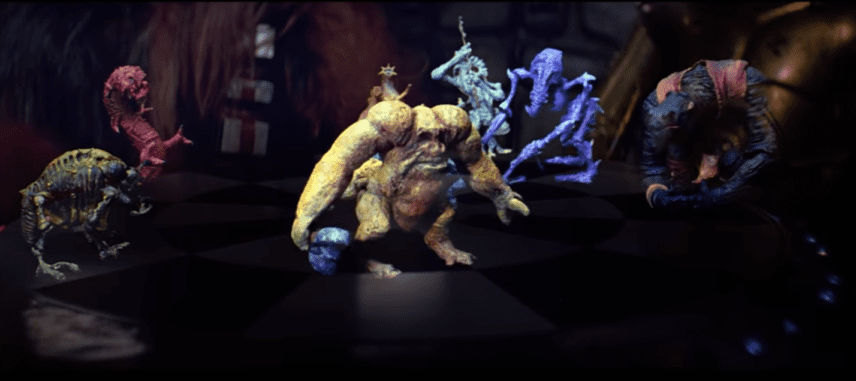
Another possible ARP 2600 connection is Dejarik, the chess-like game that Chewbacca and R2-D2 play on the Millennium Falcon en route to Alderan. Burtt did all the voices and then altered them via various tape processes, likely varispeed, but he has mentioned that he ran the voices, “through a filter so they sounded tiny”. He doesn’t mention the 2600 by name but it’s no small stretch to guess that he used the 2600, seeing as it was at hand.
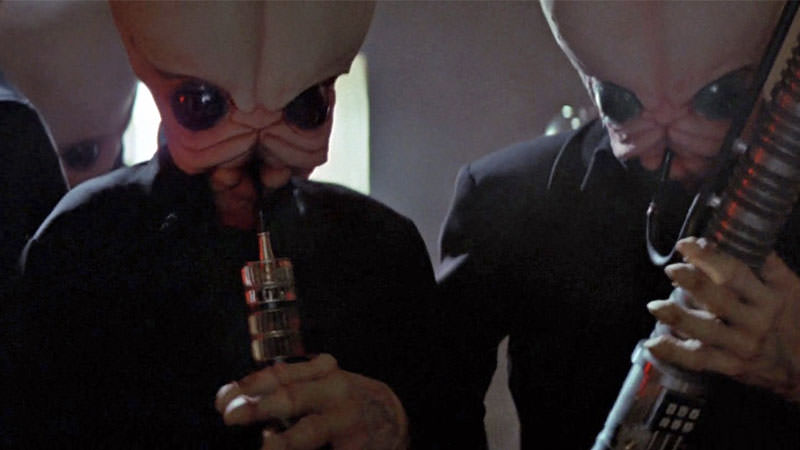
Burtt wasn’t the only fan of the 2600 involved with Star Wars. Composer John Williams, who is best known for his orchestral scores, sometimes made use of the 2600 for its alien-like sound. That’s the 2600 doing the bass and other percussion in the music in the Cantina scene. He also played it on The Empire Strikes Back and Return Of The Jedi.
Contrary to some rumours, Oberheim’s perfectly named OB-1 has no connection to the film, unfortunately.
The Empire Strikes Back

In the first sequel to A New Hope, 1980’s The Empire Strikes Back, Burtt used an Eventide Harmonizer to augment some traditional tape-recorded foley sounds. He assembled the engines on the snowspeeders from aircraft sounds but he added a Harmonizer to achieve the doppler effect of the speeders passing by the camera. According to an interview, he also mixed in a cougar snarl to beef up the sound. “Animal sounds, being organic and also being expressive, having emotions associated with them, are always useful for even inorganic objects, be they spaceships or doors or equipment”.
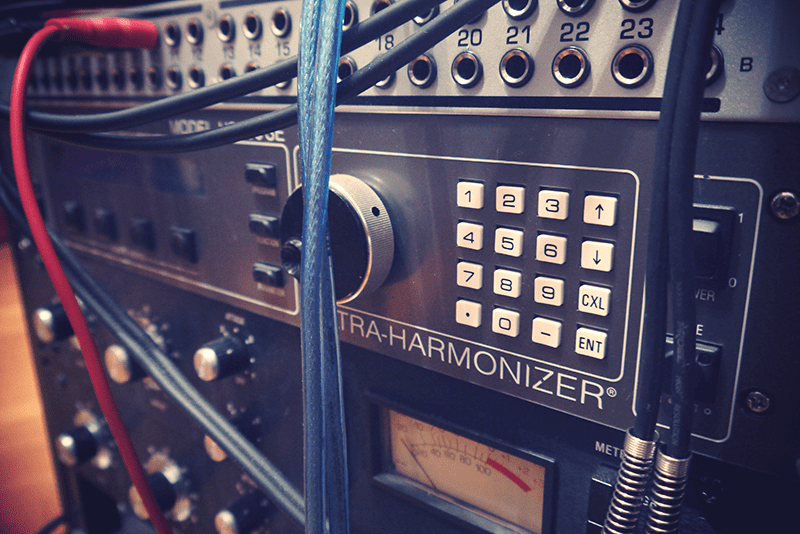
Return Of The Jedi
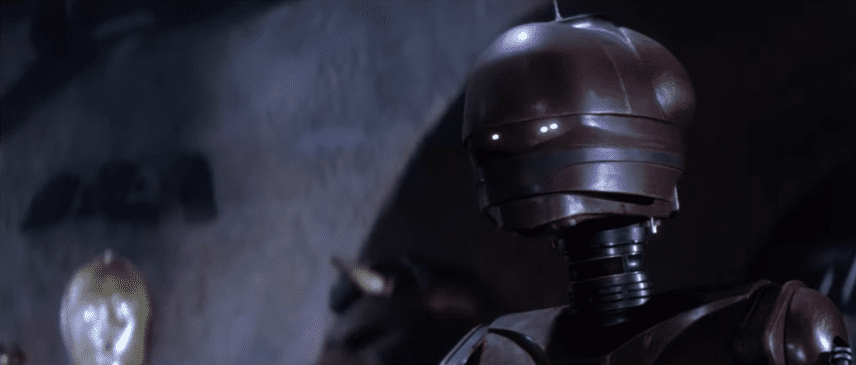
For the third film in the original trilogy, Return Of The Jedi (1983), Burtt had more droids to give voices to. The interrogator droid in Jabba’s Palace was voiced by the director, Richard Marquand, and they ran his voice through a ring modulator. A ring modulator takes two signals and combines and sum and the difference of them, creating a metallic sound.
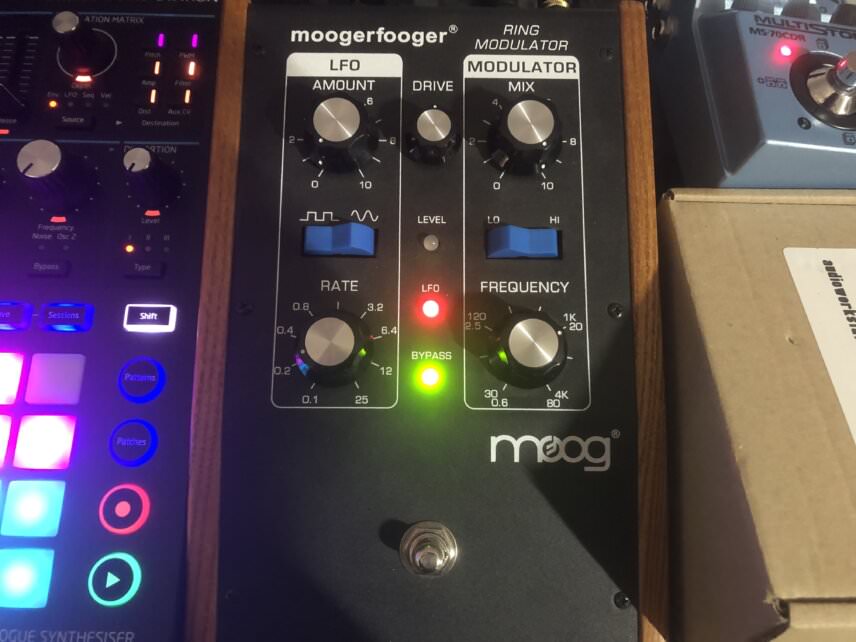
The Phantom Menace
Despite the 16-year difference between the release of Jedi and The Phantom Menace in 1999, Lucas and Burtt elected to continue using traditional foley techniques to create the sounds of the films. For example, they created the sounds of the podracers by combining the sounds of real race cars. Burtt did occasionally find himself stretching out into modern technology though.
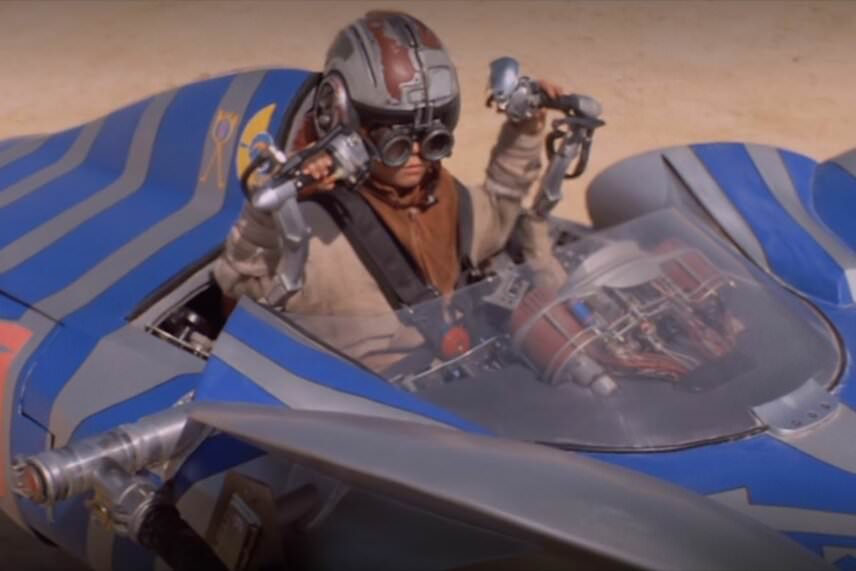
To create the doppler effects of the passing podracers, he employed Symbolic Sound Creation’s Kyma, an early software suite for sound designers. He also used it to create the sound of pieces flying off the racers, as well as for the voice of Wat Tambor of the Techno Union in Attack Of The Clones. While not hardware, it does show Burtt’s willingness to try new things to get the sound that he’s after.
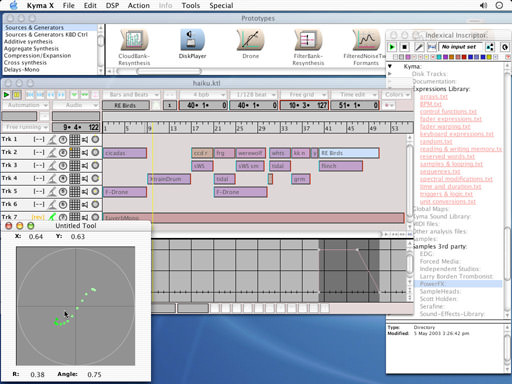
The Force Awakens
In 2015, J.J. Abrams helped reboot the Star Wars series with The Force Awakens, the first of a new trilogy of films. Although Abrams is a big hardware synthesizer fan – he named the planet Kijimi in The Rise Of Skywalker after the synth by Black Corporation, after all – The Force Awakens is sadly light in hardware sounds. However, one new character did benefit from some classic sound-processing treatment.
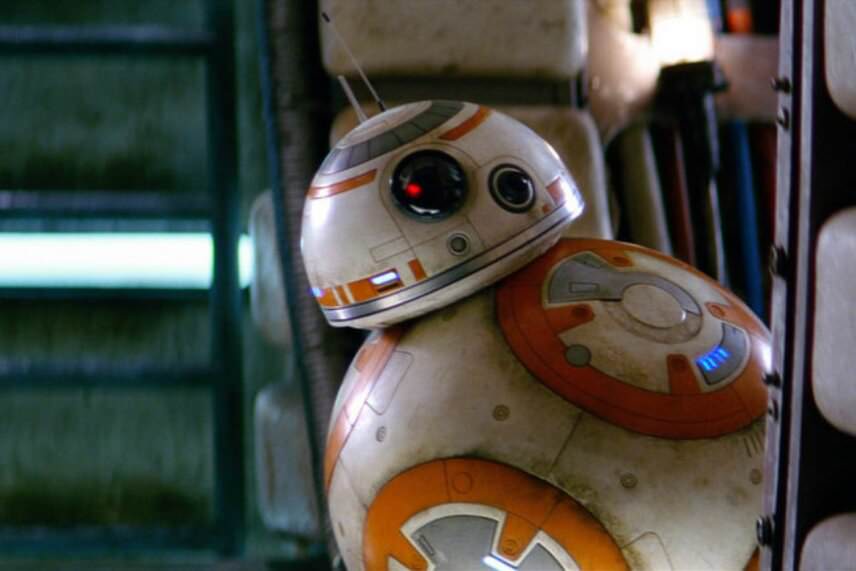
BB-8, the rolling droid, is just as expressive and personality-rich as R2-D2, although its voice is decidedly different. Rather than copy Ben Burtt and use an ARP 2600, sound designer David Acord instead took inspiration from Burtt’s approach and combined the human voice with synthetic sounds.
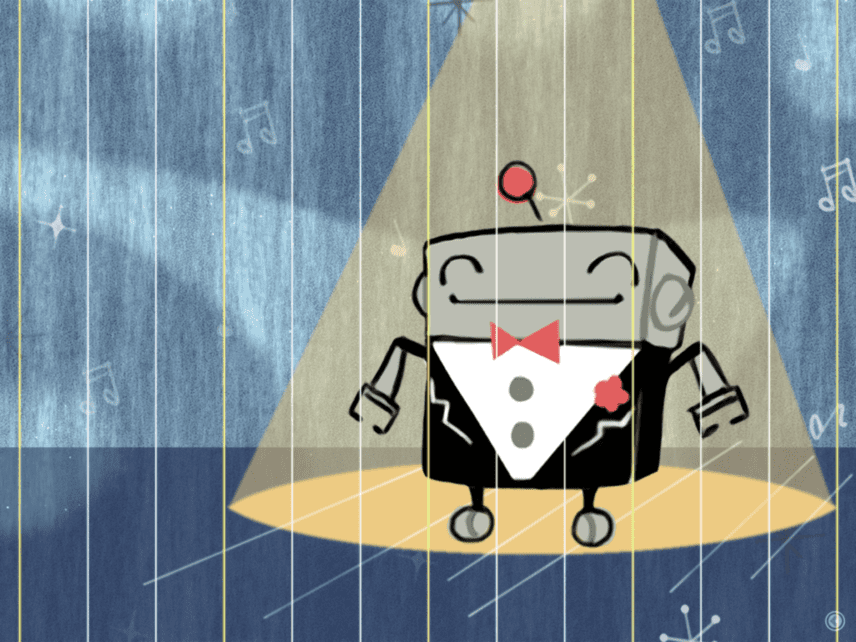
To bring BB-8 alive, Acord recorded comedian Bill Hader speaking through a talk box. A talk box is an electromechanical device that pipes the sound of an instrument (usually guitar on synthesizer) through a long, plastic tube and into a human mouth. Moving your mouth shapes the sound coming out of the tube. Rather than a traditional synthesizer though, Acord fed the output of an iPad running the Bebot app, a synth app that responds to touch. And who was operating the app? J.J. Abrams, himself.
The Mandalorian
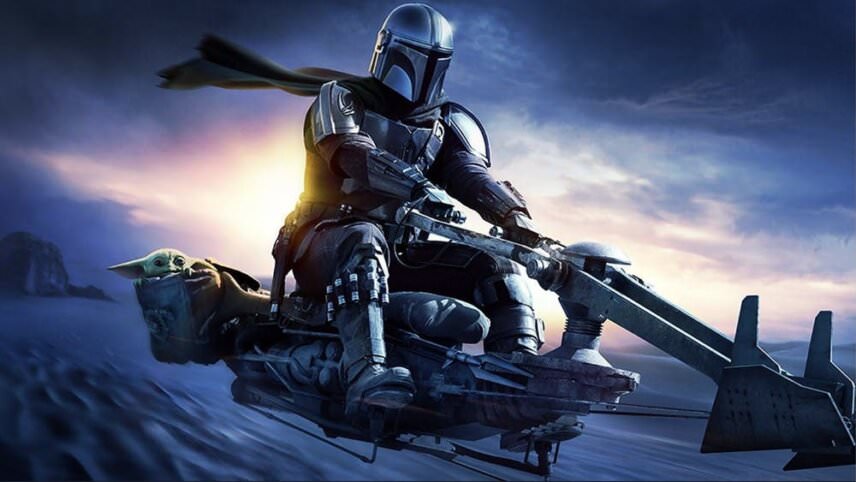
Star Wars entered a new chapter in 2019 with The Mandalorian, a series on Disney+. Ludwig Göransson composed the soundtrack and he took a different approach than the films. Among the acoustic instruments, such as the bass recorder that plays the main theme, are a few synthesizers.
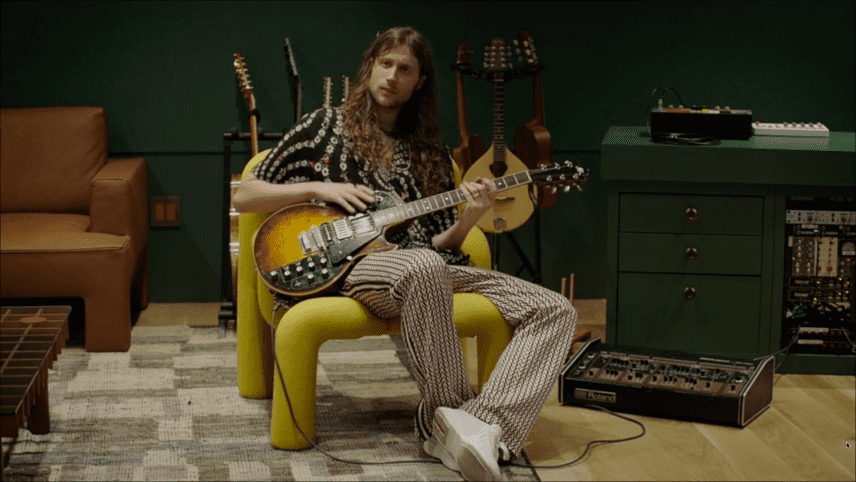
Göransson played a Roland GR-500 on the soundtrack. A fairly rare guitar synthesizer, it originally used a special guitar controller to trigger it. In Disney Gallery: The Mandalorian, a special about the series, Göransson plays it with a standard guitar, likely using it more as a signal processor than as its original intention.
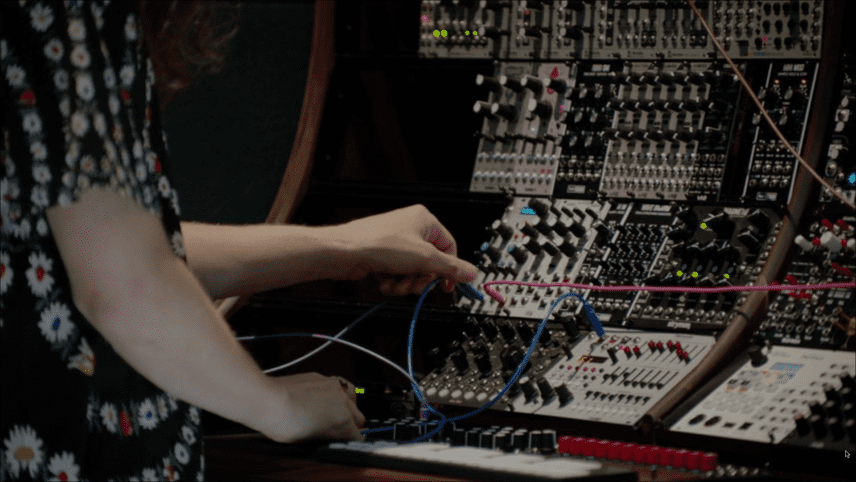
For anyone familiar with Eurorack, the driving percussion-led cues, like ‘Ship o hoj, Mandalorians!’, are a dead giveaway. Sure enough, in the special, Göransson can be seen working a massive Eurorack setup and creating the kinds of techno textures that inform the soundtrack.
